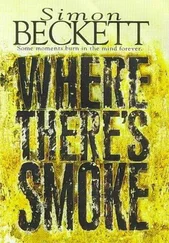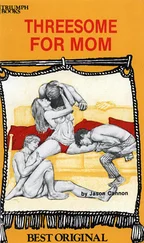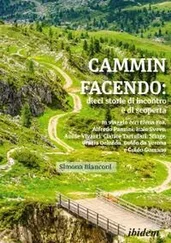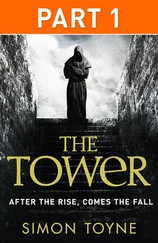Simon Foster - CHINA's Three Gorges & Xi'an
Здесь есть возможность читать онлайн «Simon Foster - CHINA's Three Gorges & Xi'an» весь текст электронной книги совершенно бесплатно (целиком полную версию без сокращений). В некоторых случаях можно слушать аудио, скачать через торрент в формате fb2 и присутствует краткое содержание. Год выпуска: 2010, Издательство: Hunter, Жанр: Старинная литература, на английском языке. Описание произведения, (предисловие) а так же отзывы посетителей доступны на портале библиотеки ЛибКат.
- Название:CHINA's Three Gorges & Xi'an
- Автор:
- Издательство:Hunter
- Жанр:
- Год:2010
- ISBN:нет данных
- Рейтинг книги:4 / 5. Голосов: 1
-
Избранное:Добавить в избранное
- Отзывы:
-
Ваша оценка:
- 80
- 1
- 2
- 3
- 4
- 5
CHINA's Three Gorges & Xi'an: краткое содержание, описание и аннотация
Предлагаем к чтению аннотацию, описание, краткое содержание или предисловие (зависит от того, что написал сам автор книги «CHINA's Three Gorges & Xi'an»). Если вы не нашли необходимую информацию о книге — напишите в комментариях, мы постараемся отыскать её.
CHINA's Three Gorges & Xi'an — читать онлайн бесплатно полную книгу (весь текст) целиком
Ниже представлен текст книги, разбитый по страницам. Система сохранения места последней прочитанной страницы, позволяет с удобством читать онлайн бесплатно книгу «CHINA's Three Gorges & Xi'an», без необходимости каждый раз заново искать на чём Вы остановились. Поставьте закладку, и сможете в любой момент перейти на страницу, на которой закончили чтение.
Интервал:
Закладка:
Taxi
Taxis are the easiest way to get around China's cities. Although drivers seldom speak English, as long as you have your destination written in Chinese (see the language boxes) you won't go too far wrong. Flagfall rates vary from $4 to $12.5 for the first two km (1.2 miles) and then rise in increments beyond this. Make sure that the driver uses the meter (" da biao ”). In some cities you'll also find motorcycle taxis, which are a speedy way to get through the clogged city streets but it can be difficult to get a fair price – see individual chapter listings for details.
Cycle Rickshaw
China still has cycle rickshaws and pedicabs, although in some of its cities these are exclusively the preserve of tourists and you need to bargain hard before you set out on your journey. If you're in a hurry they are hardly ideal, but to soak up the pace of the city they can make a fun change. See individual cities for approximate rates.
Bicycle
Although being rapidly superseded by scooters and cars, the bicycle is the traditional mode of transport in China. In spite of modernization, China has over half a billion cycles – by far the highest ownership in the world. Although cycling around the big cities can initially seem a little daunting, there are often designated cycle lanes and, as long as you move with the masses, you'll be fine. Bikes can be rented in most cities and offer an excellent way to get around, particularly in Hangzhou, Suzhou and the countryside. Rates vary from as little as $5 for a day, to $50 an hour from some upmarket hotels.
Ferry
The cities are also often best seen from the water – Hong Kong, Shanghai, Hangzhou and Suzhou are testaments to this. Although seldom very practical (with the exception of Hong Kong's Star Ferry), ferries present a different side of the city and, if you're short of funds, they can offer a cheap alternative to a river or harbor cruise.
Practicalities
Money Matters
The Currency
The currency of China is the yuan($), also known as the kwai or renminbi (RMB), which literally translates as "people's money.” At the time of writing there were $8to the US dollar, $10 to the Euroand $16 to the British Pound Sterling. Paper money was introduced to the world by China in 806 AD and today bank notescome in various amounts, many of which show a portrait of the omnipresent Chairman Mao on the front and famous landscapes from around the country on the back. Denominations are $100 (red), $50 (green), $20 (brown), $10 (blue), $5 (purple or brown), $2 (green) and $1 (green or brown), along with the almost worthless 5, 2 and 1 mao notes (10 mao, also referred to as jiao = $1) .The $2 and 2 mao notes are both green and look very similar – remember the lower value one is the smaller of the two. Counterfeitingis rife in China and even the smallest local store may have a UV scanner. While $10 notes are often copied, the one to watch out for is the $100 (see Warning – Scams ). The quality of fakes is often high, but generally you can tell by the feel of the money, which is often a little too crunchy to the touch. In Hong Kong the currency is the Hong Kong dollar(HK$) and at the time of writing there were HK$8 to the US$, HK$10 to the Euro and HK$15 to the British Pound Sterling. In Macau the pataca , or Macau dollar(MOP$) is roughly equivalent to the HK$, which can be used throughout the territory.
Banks & Foreign Exchange
The Bank of China(not the Agricultural Bank of China, Construction Bank of China, Industrial Bank of China or any of the other similarly named institutions) is the only bank licensed to exchange foreign currency or travelers' checks. Their opening hours may vary but are generally Monday to Friday from 9 am-noon and 2-5 pm. Upscale hotels can also change money, although their rates tend to be a little worse.
In order to change money you'll need your passport and, often, a sense of patience, as each one of your crisp greenbacks or checks is meticulously inspected. Dollarsare by far the most readily accepted exchange currency, followed by Eurosand then Pounds Sterling. When China first opened its doors to tourism in the 1980s, foreigners had to use FECs (Foreign Exchange Certificates), which led to the development of blackmarket money changing. Now that tourists use yuan like everybody else, blackmarket money changers are rare – if you are approached with rates that sound too good to be true, steer clear as there will probably be a few fake bills among your wad. Note that you can't change Chinese yuan into other currencies outside of China so budget accordingly and spend all of your cash!
Unlike Mainland China, Hong Kongis overflowing with exchange booths and it's quick and easy to change money. Some of the best rates are generally found on the ground floor of Chungking Mansionson Nathan Road in Kowloon.
Travelers' Checks
Traveler's checks are a safer option many people choose, although you'll pay a small surcharge for each check cashed. Ideally they should be purchased from one of the better-known issuers such as American Express, as lesser known versions may not be accepted in smaller towns. Be sure to note down the serial numbers and keep them and the purchase agreement separate from your checks. Also don't countersign them until you're sure the bank teller is watching.
ATMs & Credit Cards
China has an expanding number of ATMs, which will usually accept Amex, VISA, MasterCard, Maestroand Cirrus, though you'll pay a small flat fee for each withdrawal and, outside of large cities, ATMs may be hard to come by. Also, while plastic seems a safe and easy way to carry your cash, bear in mind that ATMs can be temperamental (or empty), so they should be used as a back-up rather than your principal source of funds. In Hong Kong, ATMs are found on seemingly every corner, although the same precautions apply. For larger purchases, credit cardsare often a good way to go. China is increasingly geared up to finding ways for visitors to part with their money and many larger shops, chains or "factory” outlets will accept credit cards, albeit with a surcharge of around 3%.
Money Transfer
If you're really stuck for cash, Western Union (www.westernunion.com) has offices around the country, often found in post offices. The sender has to pay a surcharge and you need to take along your passport to receive funds. Western Union outlets are listed where available.
Costs
While not as cheap as some parts of Asia, China still makes for an inexpensive destination in terms of day- to- day living costs. The four main costs of traveling (apart from the price of airfare to and from your home country) are accommodation, eating, transport, and attraction entry fees. At the most basic, it's possible to live and travel on less than US$20 a day. However, this involves hunting out the cheapest lodgings, eating mainly street food, traveling by local bus or hard seat train (see Getting Around By Rail ) and passing up shopping and more expensive tourist sites. A more realistic figure for most travelers would be in the region of US$50- 150 a day, which incorporates mid-range hotels, eating in good restaurants, the occasional flight and entry to all the tourist sites you'd want to visit, along with a bit of shopping. If you want a more luxurious five-star tour, plan on a minimum of US$200a day.
Читать дальшеИнтервал:
Закладка:
Похожие книги на «CHINA's Three Gorges & Xi'an»
Представляем Вашему вниманию похожие книги на «CHINA's Three Gorges & Xi'an» списком для выбора. Мы отобрали схожую по названию и смыслу литературу в надежде предоставить читателям больше вариантов отыскать новые, интересные, ещё непрочитанные произведения.
Обсуждение, отзывы о книге «CHINA's Three Gorges & Xi'an» и просто собственные мнения читателей. Оставьте ваши комментарии, напишите, что Вы думаете о произведении, его смысле или главных героях. Укажите что конкретно понравилось, а что нет, и почему Вы так считаете.












